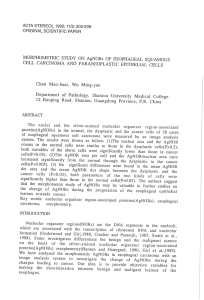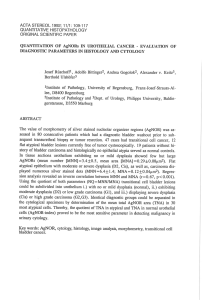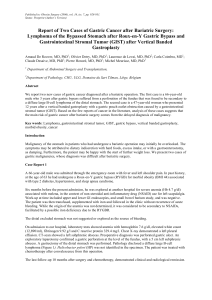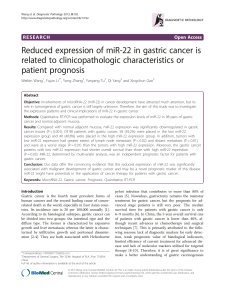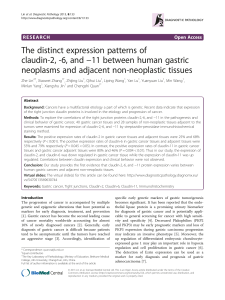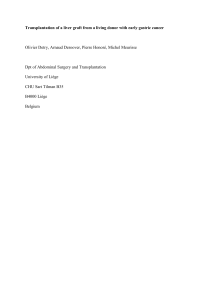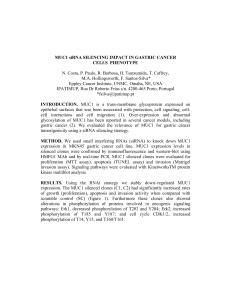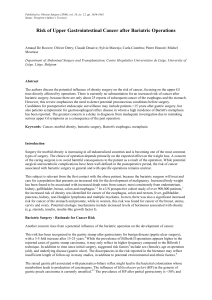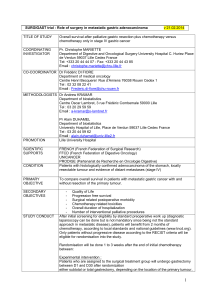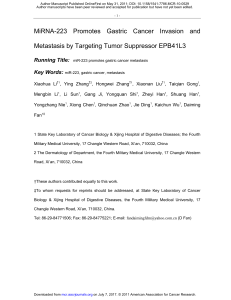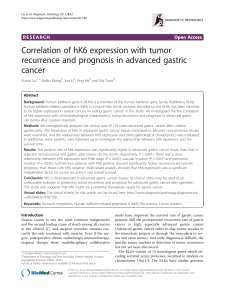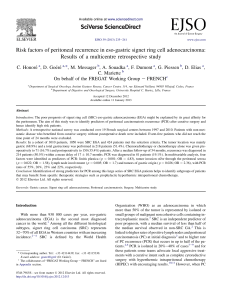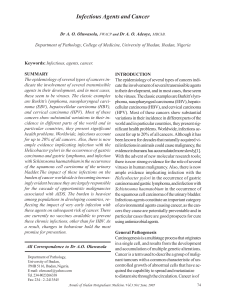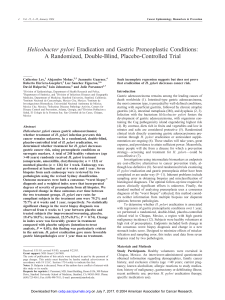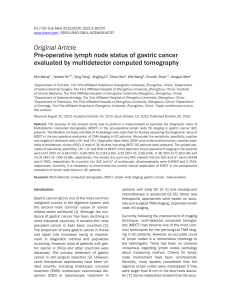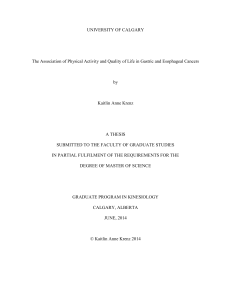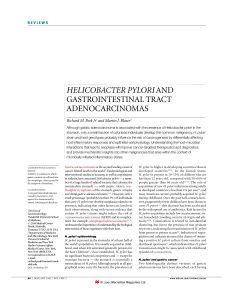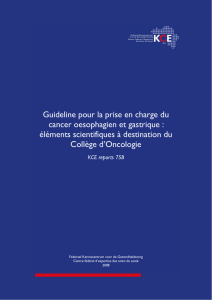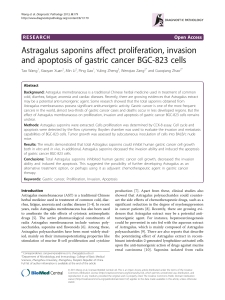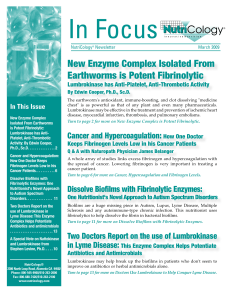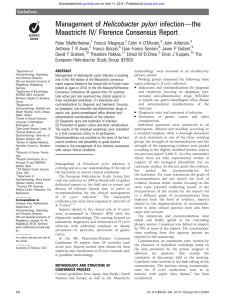ACTA STEREOL 1992; 11/1: 119-124 QUANTITATIVE HISTOPATHOLOGY ORIGINAL SCIENTIFIC PAPER
publicité
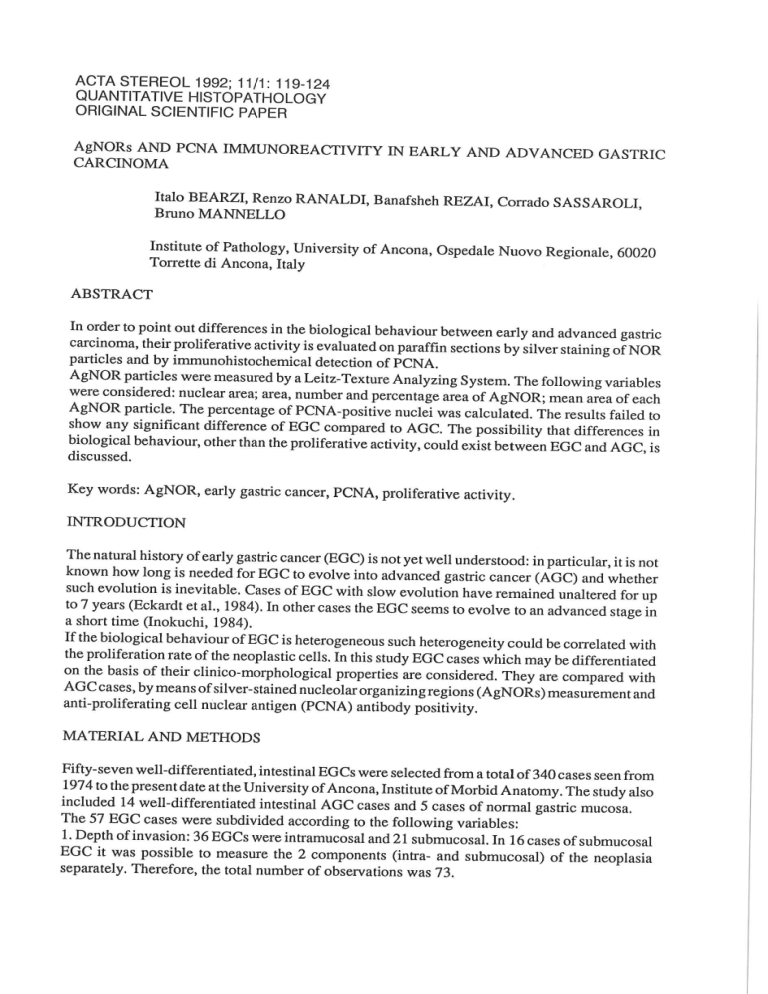
ACTA STEREOL 1992; 11/1: 119-124 QUANTITATIVE HISTOPATHOLOGY ORIGINAL SCIENTIFIC PAPER AgNORs AND PCNA IMMUNOREACTIVITY IN EARLY AND ADVANCED GASTRIC CARCINOMA Italo BEARZI, Renzo RANALDI, Banafsheh REZAI, Corrado SASSAROLI, Bruno MANNELLO Institute of Pathology, University of Ancona, Ospedale Nuovo Regionale, 60020 Torrette di Ancona, Italy ABSTRACT In order to point out differences in the biological behaviour between early and advanced gastric carcinoma, their proliferative activity is evaluated on paraffin sections by silver staining of NOR particles and by immunohistochemical detection of PCNA. AgNOR particles were measured by a Leitz-Texture Analyzing System. The following variables were considered: nuclear area; area, number and percentage area of AgNOR; mean area of each AgNOR particle. The percentage of PCNA-positive nuclei was calculated. The results failed to show any significant difference of EGC compared to AGC. The possibility that differences in biological behaviour, other than the proliferative activity, could exist between EGC and AGC, is discussed. Key words: AgNOR, early gastric cancer, PCNA, proliferative activity. INTRODUCTION The natural history of early gastric cancer (EGC) is not yet well understood: in particular, it is not known how long is needed for EGC to evolve into advanced gastric cancer (AGC) and whether such evolution is inevitable. Cases of EGC with slow evolution have remained unaltered for up to 7 years (Eckardt et al., 1984). In other cases the EGC seems to evolve to an advanced stage in a short time (Inokuchi, 1984). If the biological behaviour of EGC is heterogeneous such heterogeneity could be correlated with the proliferation rate of the neoplastic cells. In this study EGC cases which may be differentiated on the basis of their clinico-morphological properties are considered. They are compared with AGC cases, by means of silver-stained nucleolar organizing regions (AgNORs) measurement and anti-proliferating cell nuclear antigen (PCNA) antibody positivity. MATERIAL AND METHODS Fifty-seven well-differentiated, intestinal EGCs were selected from a total of 340 cases seen from 1974 to the present date at the University of Ancona, Institute of Morbid Anatomy. The study also included 14 well-differentiated intestinal AGC cases and 5 cases of normal gastric mucosa. The 57 EGC cases were subdivided according to the following variables: l. Depth of invasion: 36 EGCs were intramucosal and 21 submucosal. In 16 cases of submucosal EGC it was possible to measure the 2 components (intra- and submucosal) of the neoplasia separately. Therefore, the total number of observations was 73.
